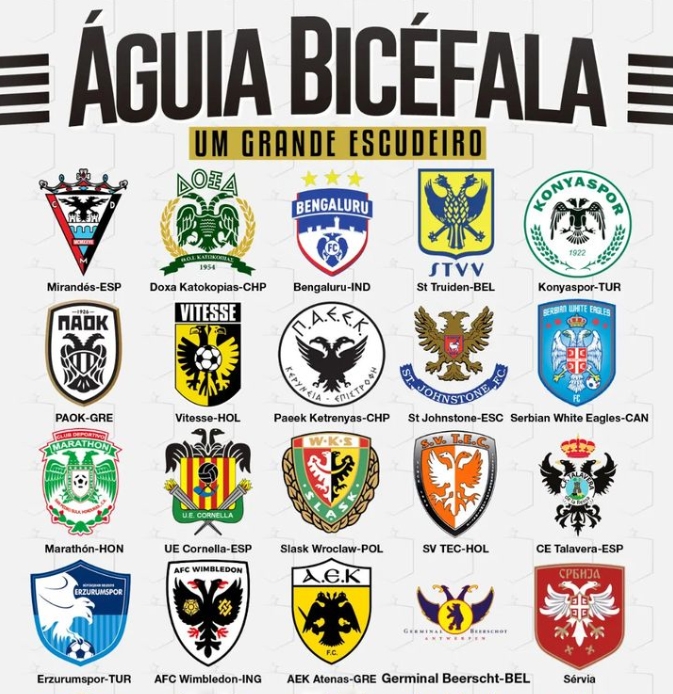Article by Djuradj Vujcic

Brazilian soccer blog Um Grande Escudeiro (UMG) made an interesting post recently where they featured several clubs with a bicephalous (double-headed) eagle in their logo. Among the clubs featured was our very own Serbian White Eagles FC.
As we all know, our logo integrates a traditional shield and white bicephalous eagle with a maple leaf design that reflects our Canadian roots. Our team’s home kit is all white commemorating the white double-headed eagle which appears on the Serbian flag while the away colours are red-blue-white commemorating the tricolour of the Serbian flag.
Featured crests in UMG’s post included CD Mirandés, UE Cornellà and Talavera CF of Spain, Doxa Katokopias, PAOK and AEK of Greece, Bengaluru FC of India, Sint-Truiden and Germinal Beerschot of Belgium, Konyaspor and Erzurumspor of Turkey, Vitesse and SV TEC of the Netherlands, PAEEK of Cyprus, St Johnstone of Scotland, C.D. Marathón of Honduras, Śląsk Wrocław of Poland, AFC Wimbledon and the Serbian national team.
There are other teams that use the bicephalous eagle as well, such as CD Toledo who played for several years in the Spanish Segunda División.
The bicephalous eagle is a symbol present in the iconography and heraldry of several Indo-European and Mesoamerican cultures. In Europe, it originates from the Hittite bicephalous eagle and reached the West in the Middle Ages through the Byzantine Empire.
Many states have used the bicephalous eagle in flags, banners and shields. It was also a symbol of the Palaiologos dynasty and was considered a talisman which led to success in battle.
The eagle’s heads facing opposite directions represented power and nobility exercised in both the East and the West (as was the case of several intercontinental empires) while in Serbian culture one head represents the monarch and the other head represents the Patriarch of the Serbian Orthodox Church.
In Hindu mythology, a two-headed bird is known as the Gandaberunda and it has a deep historical link with the Kingdom of Mysore. The bird can be traced back to the Vijayanagara Empire and it was later chosen as the flag of the Kingdom of Mysore. The bird has since become synonymous with the history of the modern-day city of Mysore. It is also the official emblem of the Karnataka State Government, where Bengaluru FC is located.
More recently, at the 2018 FIFA World Cup, the bicephalous eagle was even the subject of controversy at a match between Serbia and Switzerland – so much so that the case was covered in an academic paper at Cambridge University.
We are proud to be part of such a storied tradition. Thank you to Um Grande Escudeiro for the honour bestowed upon us!
